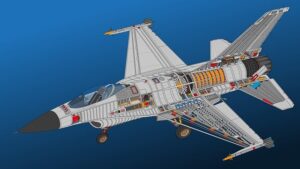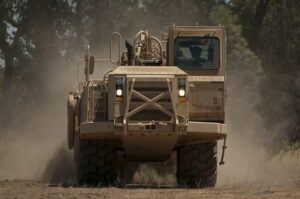
When choosing flashlights for night cycling and biking, particularly for mountain biking, it's essential to select a model that offers both high lumen output and a focused beam for long-distance visibility, as well as a floodlight for close-range navigation. The ideal flashlight should be built with robust materials like aircraft-grade aluminum or heavy-duty plastics, have an IP65 waterproof and dust-resistant rating, and use impact-resistant lenses to withstand the harsh conditions of night biking. It should feature adjustable brightness settings for efficiency and longevity, with user-replaceable batteries or a built-in USB charging port to ensure constant illumination. Advanced flashlights also offer practical features like secure mounting options, regulated battery life indicators, and intuitive interfaces. For the best experience, consider LED technology, which provides energy efficiency and optimal brightness to help you safely navigate through night rides on challenging terrains.
When the day gives way to night, the trails transform under a cloak of darkness. For mountain bikers, a reliable flashlight becomes an indispensable tool, not just for visibility but for safety on the treacherous terrain. This article sheds light on the critical role flashlights play in night cycling and guides you through selecting the best one. From evaluating essential features to understanding brightness and lumen output, we’ll explore types of flashlights—handheld versus helmet-mounted—and discuss their impact on your ride. We’ll also delve into durability, battery life, and practical tips to ensure your flashlight for night cycling and biking stands up to the challenge, keeping you illuminated and protected throughout your mountain biking adventures.
- Understanding the Essential Role of Flashlights in Night Cycling
- Evaluating the Best Flashlight Features for Mountain Biking Safety and Visibility
- Types of Flashlights: Handheld vs. Helmet-Mounted Lights for Biking at Night
- Brightness, Lumens, and Beam Distance: Key Specifications for Effective Illumination on Trails
- Durability and Design: Factors to Consider in a Flashlight for Rough Terrain and Weather Conditions
- Battery Life and Power Options: Ensuring Your Light Lasts the Entire Trail
- Practical Tips for Using Flashlights During Night Mountain Biking Excursions
Understanding the Essential Role of Flashlights in Night Cycling
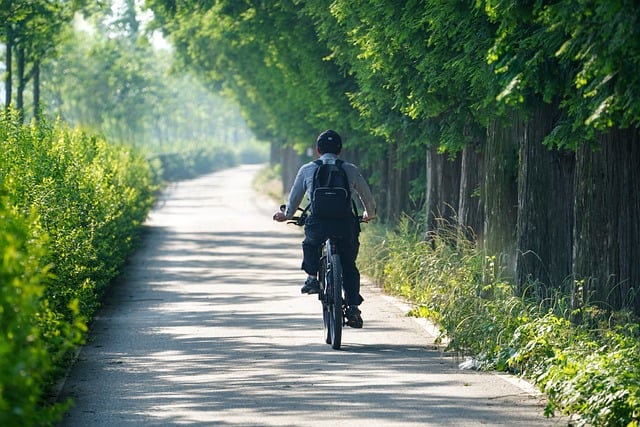
Flashlights play a pivotal role in enhancing visibility and safety during night cycling, making “Flashlights for Night Cycling and Biking” an indispensable tool for mountain bikers. The sudden shift from well-lit urban environments to the shadowy confines of forest trails can be disorienting without adequate lighting. A robust flashlight not only illuminates the path ahead but also alerts wildlife of your presence, reducing the risk of unexpected encounters. When selecting a flashlight for night cycling, consider lumen output, beam distance, weight, and battery life to ensure you have a reliable source of light that can last through your ride. Additionally, the versatility of a handheld flashlight allows riders to direct light precisely where it’s needed most, whether that’s ahead to navigate technical sections or onto the ground to inspect trail conditions or make repairs. Incorporating a flashlight into your night biking gear is more than an accessory; it’s a critical piece of equipment that can transform a potentially hazardous ride into a safe and enjoyable experience. Mounting options such as handlebar clamps or helmets mounts can free up your hands, offering convenience and safety benefits that are essential for maintaining control of your bike in all lighting conditions.
Evaluating the Best Flashlight Features for Mountain Biking Safety and Visibility
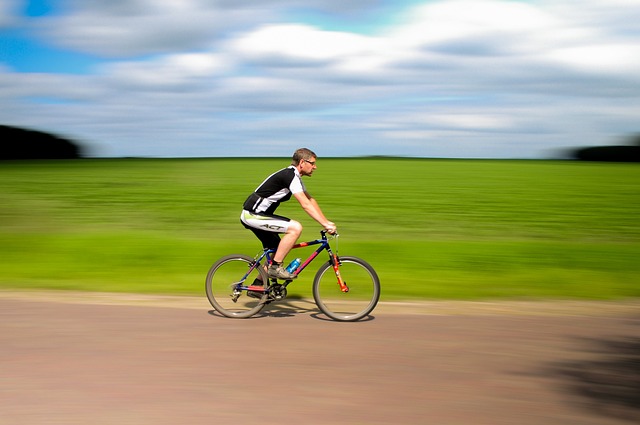
When selecting a flashlight for night cycling and biking, safety and visibility are paramount. A high-lumen output is crucial for illuminating dark trails and paths, ensuring you can see potential obstacles or navigate through technical sections with confidence. The beam pattern should be focused yet wide enough to light up the trail ahead without causing discomfort or creating harsh shadows. Look for flashlights that offer adjustable intensity settings; this feature allows riders to conserve battery life during less demanding stretches and enhance visibility in critical moments.
In addition to a powerful beam, durability is another key consideration. A robust flashlight designed for mountain biking should withstand the rigors of outdoor use, including potential drops or exposure to the elements. It must be weather-resistant, preferably with an IP rating that indicates its level of protection against dust and moisture. Furthermore, the flashlight’s body should be constructed from high-quality materials like aircraft-grade aluminum, ensuring it can endure the bumps and vibrations encountered during a ride. Additionally, consider flashlights that come with helmet mounts or handlebar attachments specifically engineered for mountain biking, as this will free up your hands and direct the light exactly where it’s needed most. This not only enhances safety but also provides a more immersive experience, allowing you to fully appreciate the nighttime beauty of your surroundings while ensuring you reach your destination safely.
Types of Flashlights: Handheld vs. Helmet-Mounted Lights for Biking at Night

When venturing out for night cycling, selecting the right type of flashlight is paramount for both safety and enjoyment. Handheld flashlights for night cycling offer versatility as they can be easily carried and directed towards the path ahead or used to signal other riders. They come in various sizes and luminosities, allowing cyclists to choose based on personal preference and the intended use case. For those who prefer their hands unencumbered, handheld models with wrist straps ensure the light remains secure during rough terrain or unexpected maneuvers.
On the other hand, helmet-mounted lights for biking at night provide a hands-free illumination solution that keeps the light precisely where it’s needed most—directly in the cyclist’s line of sight. These lights are designed to cast a wide beam, enhancing visibility on trails and roads alike. They also offer a more natural viewing experience as the light mimics the angle at which the human eye naturally looks. Helmet-mounted flashlights for night cycling can be particularly beneficial when navigating technical sections or steep descents, where having both hands on the handlebars is crucial. When choosing between handheld and helmet-mounted options for flashlights for night cycling and biking, consider factors such as the type of terrain you’ll be riding on, your personal comfort with handling, and the specific features that will best meet your safety and lighting needs. Both types have their advantages, and the decision ultimately depends on rider preference and the conditions of the ride. Flashlights For Night Cycling And Biking are not just about visibility but also about enhancing the overall experience and ensuring a safe journey through the darkness.
Brightness, Lumens, and Beam Distance: Key Specifications for Effective Illumination on Trails

When venturing out on mountain biking trails under the cover of darkness, having a reliable flashlight is paramount for both safety and enjoyment. The brightness of a flashlight, often measured in lumens, directly impacts how well you can see your surroundings. For night cycling, a flashlight with a high lumen output ensures objects, roots, rocks, and uneven terrain are clearly visible, allowing riders to navigate confidently and avoid potential hazards. When selecting a flashlight for night cycling and biking, look for models that offer at least a few hundred lumens; however, for more intense trails or for those who prefer brighter illumination, flashlights with over 1000 lumens can make a significant difference in lighting up the path ahead.
In addition to lumen output, beam distance is another critical specification for mountain biking at night. A longer beam distance means the light you rely on extends further down the trail. This feature is especially useful for riders who often find themselves on less-traveled or remote trails. The beam should be focused and throw light far enough to reveal the terrain ahead without causing discomfort due to glare. A well-designed flashlight for night cycling and biking will offer a balanced beam that illuminates the trail effectively, ensuring riders can maintain their speed and focus on their ride rather than worrying about what’s immediately in front of them. Considering both brightness and beam distance will provide the necessary visibility to make mountain biking at night a safer and more exhilarating experience. Flashlights designed for this purpose often come with adjustable settings, allowing users to switch between different light modes as needed, further enhancing their utility on the trail.
Durability and Design: Factors to Consider in a Flashlight for Rough Terrain and Weather Conditions

When selecting a flashlight for night cycling and biking, especially on rugged terrains and under variable weather conditions, durability and design are paramount factors to ensure safety and longevity of the light source. A flashlight designed for this purpose must withstand the rigors of mountain biking’s demanding environment. It should feature a robust construction, typically using high-impact materials such as aircraft-grade aluminum or heavy-duty plastics engineered to resist shocks and falls. The housing ought to be both waterproof and dust-resistant, rated at least IP65 to withstand the elements. Additionally, the lens should be impact-resistant, often made of tempered glass or a durable polycarbonate, to prevent glare or fracture upon collision with rocks or branches.
The design of the flashlight must cater to the practical needs of night biking, such as a secure grip that does not interfere with handlebar control, and a beam pattern that offers both long-distance visibility and close-range illumination. A focused spotlight is crucial for seeing ahead on trails, while a diffused or floodlight setting is essential for navigating complex terrain where obstacles are frequent. The flashlight should also be equipped with a reliable mounting system, preferably with quick-release features to facilitate easy attachment and removal without interrupting your ride. Features like adjustable brightness settings, regulated battery life indicators, and intuitive user interfaces enhance the flashlight’s practicality for night cycling and biking enthusiasts. Flashlights For Night Cycling And Biking should be a reliable companion, providing consistent performance and enduring the elements, ensuring that your ride is both safe and enjoyable.
Battery Life and Power Options: Ensuring Your Light Lasts the Entire Trail

When embarking on a night-time mountain biking adventure, the reliability of your flashlight becomes paramount. The durability of its battery life directly correlates with the safety and success of your ride. Optimal flashlights for night cycling and biking are engineered to deliver consistent lumen output without compromising on runtime. To ensure your light lasts the entire trail, consider models that offer both high-intensity and low-power settings, allowing you to manage power consumption effectively. High-quality lithium-ion batteries, which are commonly found in top-tier flashlights for night cycling and biking, provide a longer lifespan and quicker recharging capabilities compared to traditional alkaline batteries.
Moreover, the power options available today go beyond just battery type. Some of the best flashlights for night cycling and biking come with built-in USB charging ports, making it convenient to top up power during rest stops or before setting out. Additionally, models equipped with energy-efficient LED technology ensure that you get the most out of each charge cycle, extending your illumination duration. When selecting a flashlight for night cycling and biking, prioritize those with user-replaceable batteries so you can carry spare power sources. This way, you can switch out depleted cells for fresh ones without interruption, guaranteeing that your light stays on, lighting your path through the most challenging trails under the cover of darkness.
Practical Tips for Using Flashlights During Night Mountain Biking Excursions
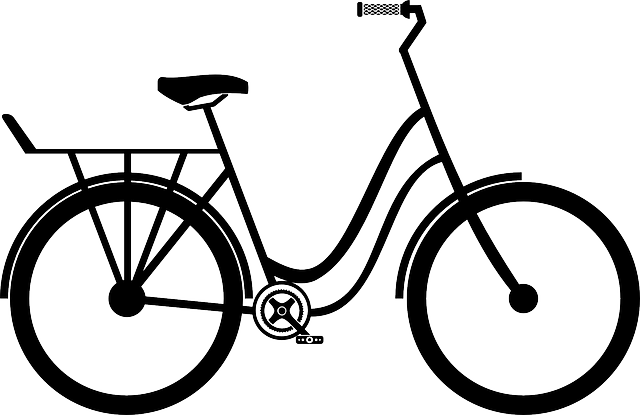
When embarking on a mountain biking adventure under the cover of night, the right lighting is paramount for safety and enjoyment. A dependable flashlight or headlamp designed for night cycling not only illuminates your path but also enhances visibility of the trail and surrounding environment. Choose a flashlight with a high-quality LED bulb that offers a strong beam without causing discomfort from glare. Adjust the brightness as needed; often, a lower lumen output is preferable for long periods, preserving night adaptation and reducing battery drain.
Optimize your lighting setup by positioning your flashlight in a way that casts light where it’s most needed—directly in front of you on the trail. If using a handlebar-mounted light, ensure its beam pattern is wide enough to cover obstacles and irregularities ahead. For handheld options, consider a flashlight with a focused beam for spotting distant trail markers or obstacles. Always bring extra batteries or a charging solution, as cold nights can quickly deplete power. Additionally, practice handling your flashlight without compromising your grip on the handlebars; muscle memory can help you adjust settings or aim your light with minimal disruption to your ride. By preparing and utilizing your flashlights effectively for night cycling and biking, you’ll navigate the trails confidently, transforming darkness into a thrilling backdrop for an unforgettable mountain biking experience.
Mountain biking at night presents unique challenges that necessitate careful preparation and the right gear. Among these, the selection of a suitable flashlight is pivotal for both safety and enjoyment. This article has delved into the critical aspects of flashlights for night cycling and biking, guiding readers through the best features, types, specifications, and practical tips to enhance visibility and navigate trails confidently. When choosing a flashlight, prioritize lumens and beam distance for ample illumination, opt for durable designs that withstand harsh conditions, and consider battery life and power options to ensure your light remains on throughout your ride. By heeding the advice provided, you’ll be well-equipped to embark on night biking adventures safely and effectively.






